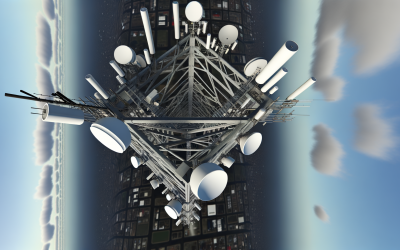

Being a customer advocacy professional means that you get to work in the most rewarding part of marketing. You can see the direct impact of everything you do and how advocacy helps close business. But more than that, you get talk to fascinating people, unearth remarkable stories, and create relationships.
Creating customers that create other customers
Eight or so years ago, I was at a customer advocacy conference in North America. You know the one. An advocacy pro working for a midsize global tech company stood up and proudly announced that they had implemented a new system that meant they never had to speak to a customer again. The room applauded. I was mystified.
Automation is not optional. When you’re managing large volumes of customer advocates, technology is essential. It makes things more efficient, more scalable, and, in some cases, even more personalized. Yet customer advocacy isn’t just about volume. It’s about value. And value comes from relationships.
For volume, there might well be the need for points, swag and prizes. Meanwhile, at the top of the pyramid we’re in the business of creating customers who create other customers. That doesn’t happen through automated emails and digital dashboards alone. It happens through human connection.
The role of customer advocacy professionals is much more than creating campaigns and firing out emails-it’s about building real relationships.
The power of personal connection
Some of the best advocacy professionals I know insist on being at every video shoot or interview call. Not because they don’t trust the production team, but because they want to be there for their customers. They want to strengthen relationships, ensure the messaging is right, and show their advocates that they matter.
Then there’s the advocacy leader I know who has built such strong relationships that when something goes wrong with a service or solution, her customers don’t call their sales rep. They don’t vent to ten other CEOs. They call her. No matter where she is in the world, she’s their first point of escalation. That’s the kind of trust and loyalty that no AI or gamification can replicate.
Of course, this level of connection isn’t infinitely scalable. But when 80% of your revenue comes from 20% of your clients, you can’t afford to treat those relationships as just another data point. Advocacy is more than managing a program. It’s about being a trusted partner.
When 80% of your revenue comes from 20% of your clients, relationships aren’t optional-they’re essential.
The future of advocacy: tech and trust
Let’s be clear: technology isn’t the enemy. AI, automation, and digital platforms all have a role to play in advocacy. They help us scale, personalize, and streamline our efforts. But they can’t replace the human element.
Advocacy professionals who can build genuine relationships will always have an edge. They’ll be the ones who can navigate difficult conversations, turn unhappy customers into loyal advocates, and ensure their company is the first choice-not because of price, but because of trust.
At the end of the day, no one wants to win deals on price, battling with procurement every time. The strongest advocacy programs don’t just generate case studies and referrals. They create relationships that make customers want to stay, grow, and advocate.
The future of advocacy isn’t just about AI. It’s about AI mixed with real human connection.
And if we get that balance right, we won’t just be managing programs-we’ll be building something far more valuable: lasting, meaningful customer relationships.





